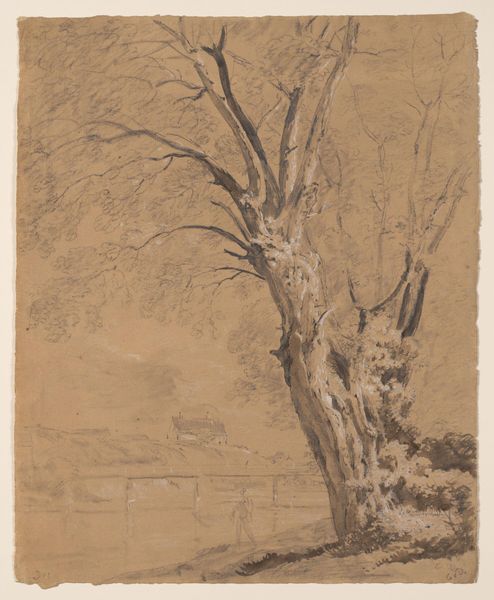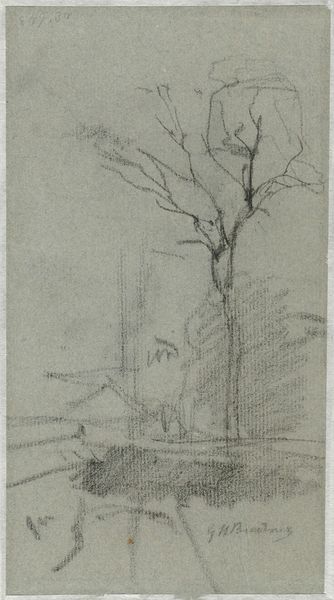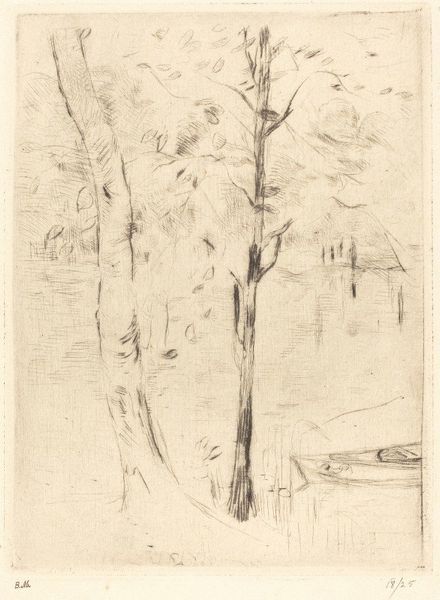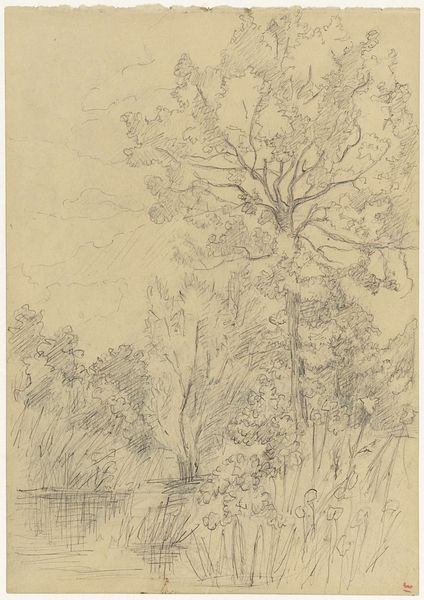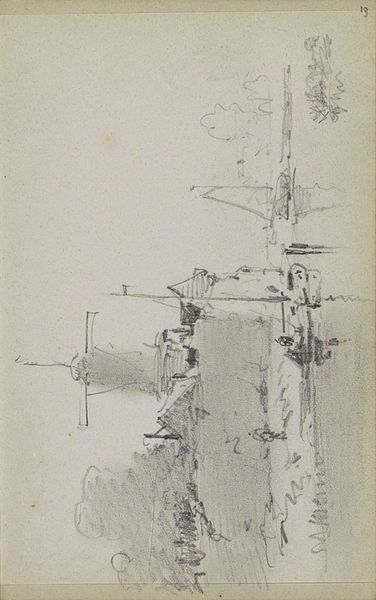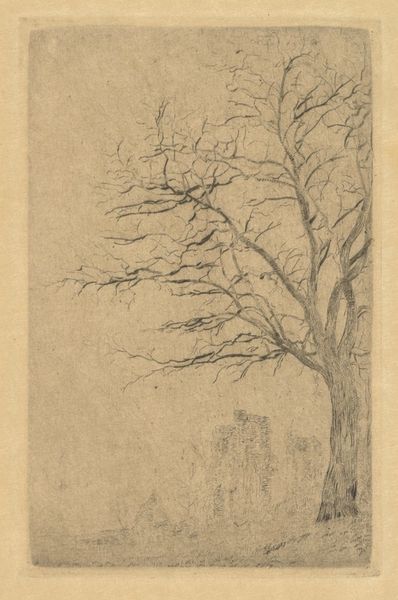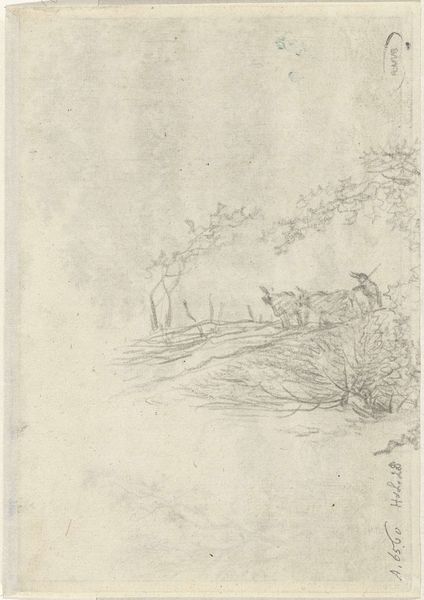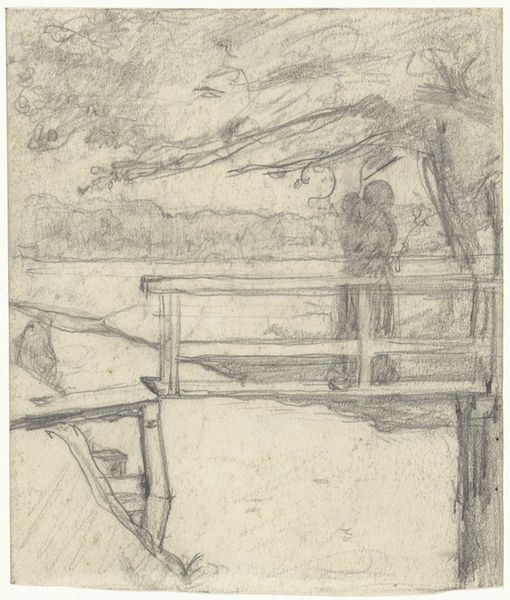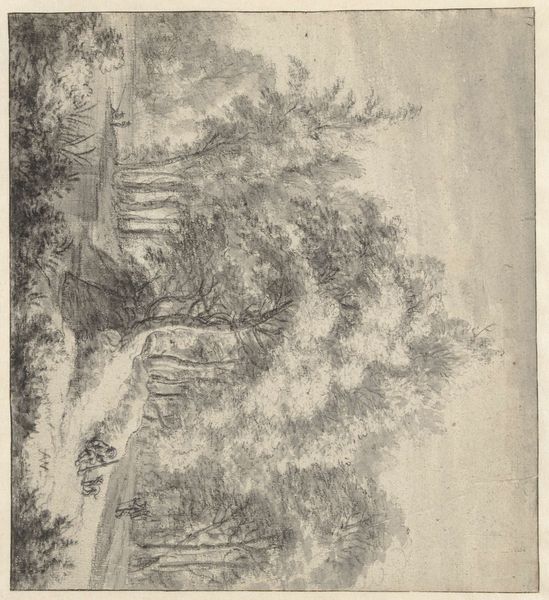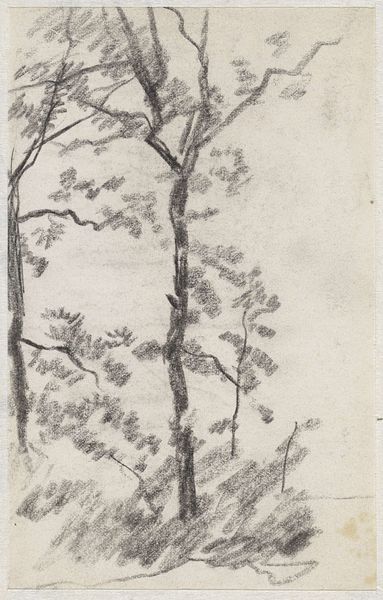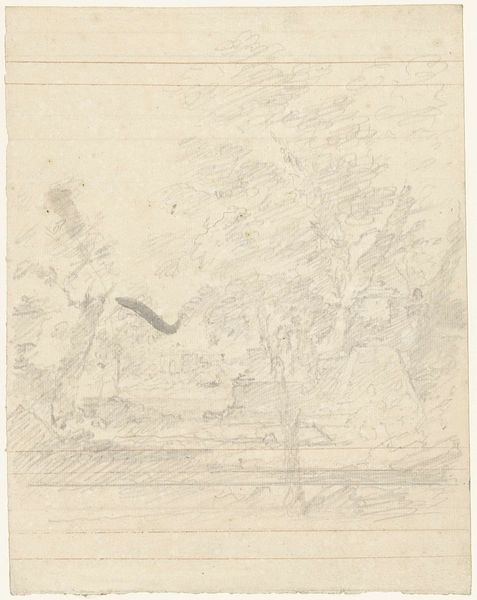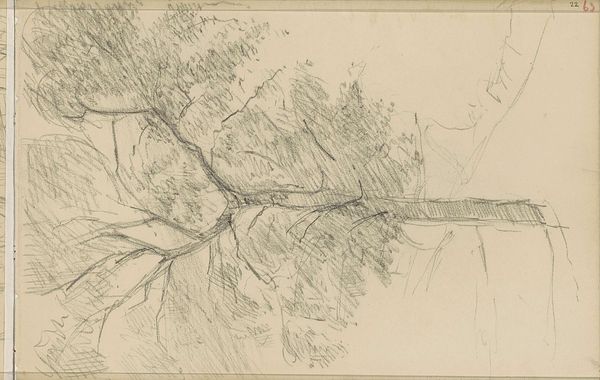
drawing, dry-media, pen
#
drawing
#
landscape
#
etching
#
dry-media
#
line
#
pen
#
realism
Dimensions: height 248 mm, width 219 mm
Copyright: Rijks Museum: Open Domain
Curator: Looking at Richard Nicolaüs Roland Holst's "Boomgaard te Eemnes," made sometime between 1878 and 1938, the overwhelming impression is one of serene observation, wouldn't you agree? Editor: Serene perhaps, but my immediate response is more melancholic. The muted tones and delicate lines evoke a sense of fragility and impermanence, like a memory fading at the edges. It's rendered in pen and etching, correct? Curator: It is, which deepens the narrative. Consider that the etching itself embodies layers of process. Roland Holst engages themes around rural life, alienation from the self, class struggle, love, identity, the construction of narratives. A range of historical processes is folded into the work, if you will. It resonates as deeply psychological; are those the fences that keep the working class, and maybe even all of us, separated and limited in what can be achieved? The chickens seem so vulnerable in that wide open space. Editor: The composition definitely speaks to a certain isolation. The starkness of the tree trunk and its placement create a visual pause. It's a structural pillar amid all the sprawling chaos, both containing and confined by the etching’s meticulous web of lines and varying tone and densities. I do feel though the formal relationships have their own sort of balance. Curator: But to whose advantage, I wonder? Are these rural Dutch subjects empowered by it, or complicit in their own silencing? Where do race and class fit in this landscape? How do these factors determine relationships within rural, and greater Dutch, society? Even nature cannot escape historical encoding in its representational form; landscape isn’t simply neutral ground. Editor: Your reading certainly offers a wider lens onto social imbalances, and perhaps it underscores the limitations of a purely formalist reading. Curator: Every element in art has political weight, regardless of artistic intent; but also beauty! Editor: Well said. Seeing it framed this way helps me appreciate the multi-dimensionality; not just the forms, but also the underlying discourses and historical weight this piece truly carries. Thank you.
Comments
No comments
Be the first to comment and join the conversation on the ultimate creative platform.
